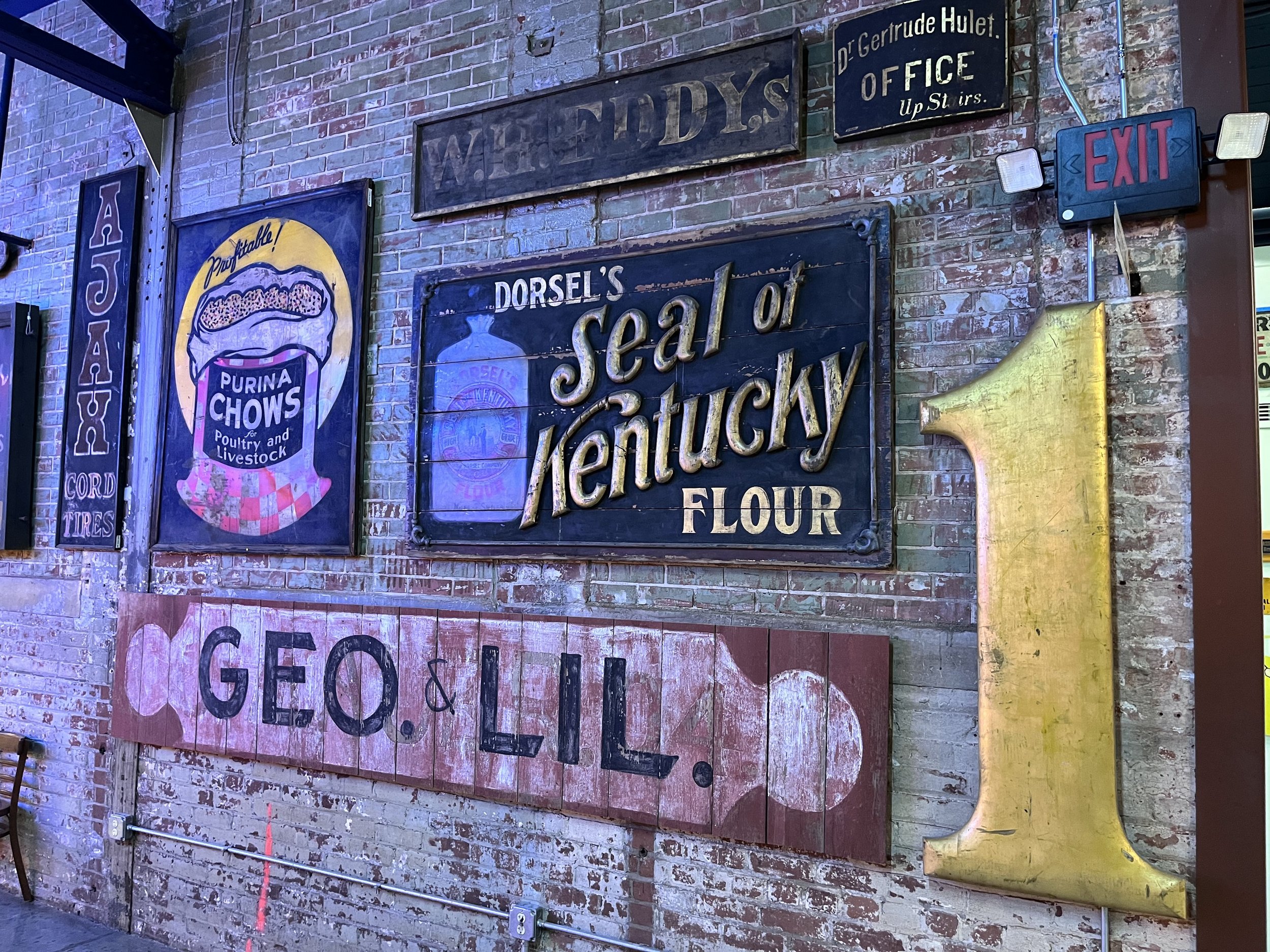American Sign Museum
American Sign Museum, 1330 Monmouth Ave., Cincinnati, OH 45225
www.americansignmuseum.org
If I could choose one place in America to live, it may well be the American Sign Museum.
Tucked into a hidden warehouse corner of Cincinnati's Camp Washington neighborhood, the Museum is an absolute treasure trove of nostalgic delight. The warm glow of vintage neon and incandescent bulbs is alluring the moment you walk into the galleries. With the signs themselves providing the lighting for the venue, there is a soft, dim hominess to the site that immediately settles the nerves.
“The collection honors an often overlooked part of our culture that hides in plain sight as part of our daily lives.”
Originally founded in 1999, the American Sign Museum holds the honor of being the largest public museum dedicated to signs in the United States. It covers more than 100 years of American sign history in 20,000 square feet of indoor space.
As the site’s history states, “Tod Swormstedt spent 26 years on the staff of Signs of the Times magazine, which was founded in 1906. He became the fourth-generation editor of the “bible of the sign industry.” Tod parlayed all of his knowledge and contacts into a self-proclaimed “mid-life crisis project” that would eventually become the American Sign Museum.”
The coolest part of the space is the built in Main Street, complete with store fronts and a brick lined street, mimicking some idyllic version of the American past.
The neon is the most prominent eye candy, but the Sign Museum remains true to its mission, with exhibits that cover the gamut of sign styles, from early hand carved to mid-century hand painted, post bills, show posters, and unique examples of commercial art. There’s even a small but sizable film theater room for video exhibitions.
For a modest ticket fee ($15, youth/seniors/military just $10, 12 and under free), guests are welcome to stay as long as they like. It’s a nice bonus, considering it can take a few laps through to take it all in. After a few strolls up and down the mocked up street, past the clothing, goods, and electronic shops, under the pizza, ice cream, and burger signs, standing in awe of the enormous and iconic McDonalds and Holiday Inn signs, being lulled by the whir of motors spinning soft lights strategically placed around the galleries.
As you nestle in, you might just start daydreaming about renting out a little walk up unit in the second story of one of the faux-buildings wooing you to take one more gander at the historical information and all the marks of craftsmanship of thousands of hands whittling, carving, painting, twisting in bulbs to communicate from the past.








